4 Calligraphy And Writing Techniques in the Qin and Han Dynasties
Part I. Culture
1 Qin Dynasty and Calligraphy
The Qin Dynasty (秦/qín) was the first dynasty of Imperial China, lasting from 221 to 206 BC. 秦始皇/qín shĭ huáng, the First Emperor of Qin, introduced a range of reforms such as standardized currency, weights, measures, and a uniform system of writing, which aimed to unify the state and promote commerce. The general term seal script can be used to refer to several types of seal scripts, including the large or great seal script (大篆/dà zhuàn) and the lesser or small seal script (小篆/xiǎo zhuàn). Most commonly, without any other clarifying terminology, seal script refers to the latter. The term large seal script itself can also cover a broad variety of scripts. These include a variation of Qin writing that is earlier than the small seal characters, but also the earlier Western Zhou forms, or even oracle bone characters, as well.
Clerical script (隶书/隸書/lì shū) evolved in the Warring States Period (战国时期/戰國時期/zhàn guó shí qī) to the Qin. It was dominant in the Han Dynasty (汉/漢/hàn), and remained in use through the Wei-Jin periods (魏晋时期/魏晋時期/wèi jìn shí qī). Due to its high legibility, it is still used today as an artistic touch in headlines, signboards, and advertisements.
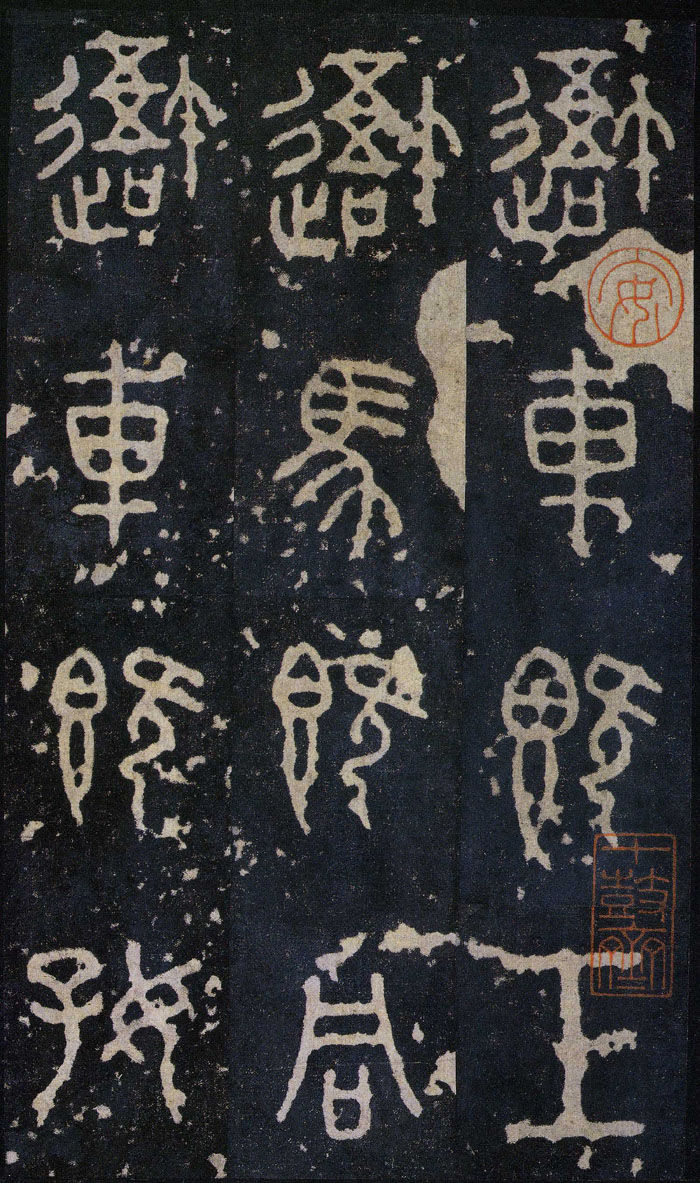 |
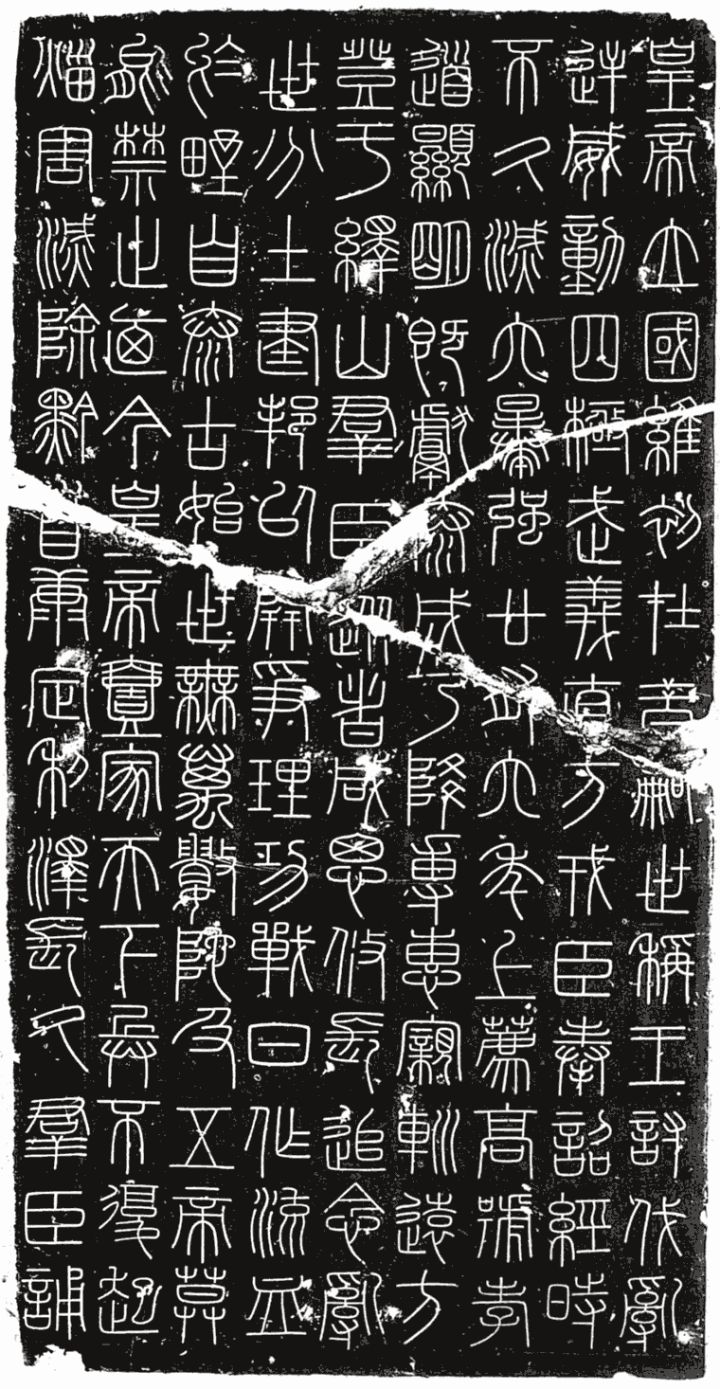 |
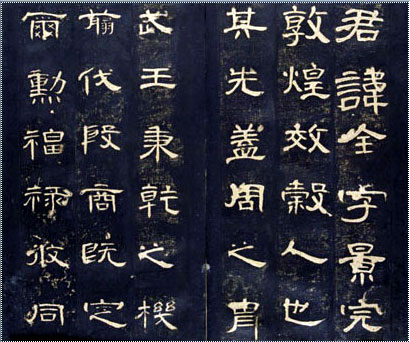 |
Figure 1: Rubbing of large seal script 大篆, small seal script 小篆, and clerical script 隶书/隸書(in order)
*
Part II. Calligraphy Writing
1 Brush Techniques
Experienced calligraphers give utmost attention to the proper use of a brush’s tip. It’s because different parts a brush can create different effects. Here are three techniques to note.
1.1: 中锋/中鋒/zhōng fēng
The most preferred technique is known as writing with 中锋/中鋒, a center-tip technique. The proper way to apply this technique is to hold the brush vertically so that the tip of the brush always moves along the middle line of the stroke.
1.2 侧锋/側鋒/cè fēng and 偏锋/偏鋒/piān fēng:
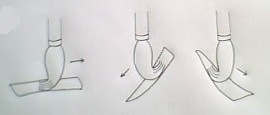 |
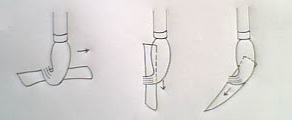 |
Figure 2: 中锋/中鋒 and 侧锋/側鋒 (Adapted from 中华书法 Chinese Calligraphy)
1.3 Best Technique Selection
2 Strokes That Compose Characters
2.1 横折 héng zhé horizontal-vertical turn
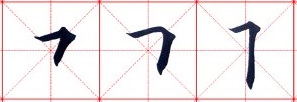 |
 |
Figure 3: Three types of a horizontal-vertical turn
There are three types of horizontal-vertical turns. Each type needs a downward turn at the end of the horizontal part. The turning point is created by pressing the brush slightly to the down-right side to produce an angular turning effect.
2.2 竖折/竪折/shù zhé vertical-horizontal turn
 |
 |
Figure 4: Two types of a vertical-horizontal turn
For both, it is necessary to make a rightward turn at the end of the vertical part. The turning point is done by pressing the brush slightly to the bottom-right side to produce the angular turning effect.
3 Composing Characters
3.1 Stroke Order
Arch Chinese lists 12 rules of Chinese character writing order. Below is Rule 8:
- Rule 8: Left vertical before enclosing (e.g., 日)
- Rule 9: Inside before outside (e.g., 日 and 自)
For details, visit the Arch Chinese website. Yellowbridge Online Dictionary can also provide additional information.
3.2 Characters
口/kǒu/mouth; 日/rì/sun, day; 户/hù/household, door; 山/shān/mountain, hill
3.3 Sample calligraphy characters
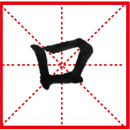 |
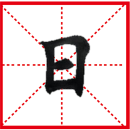 |
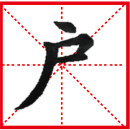 |
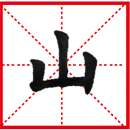 |
3.4 Writing by Following Rules
- Prepare tools and materials.
- Start to write by following instructions.
- Be aware of rules for posture and stroke order.
4 Homework
4.1 Practice more characters: 品/pĭn/product, moral character; 自/zì/self, from; 谷/gŭ/valley, grain; 出/chū/to go out, to exit
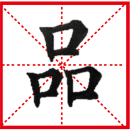 |
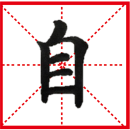 |
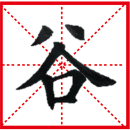 |
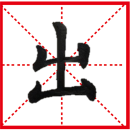 |
4.2 Search online to find differences between the Qin and Han clerical styles.
*
Part III. Additional Resources
- Qin Shihuang: https://en.wikipedia.org/wiki/Qin_Shi_Huang
- Seal Script: https://en.wikipedia.org/wiki/Seal_script
- Clerical Script: https://en.wikipedia.org/wiki/Clerical_script
- Chinese Calligraphy: http://icalligraphy.blogspot.com/2010/07/brush-techniques-slanting-tip-for.html

